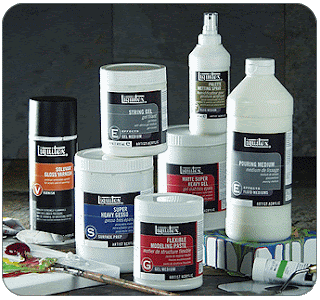Acrylic painting involves the use of different types of acrylic mediums.With the help of mediums, acrylics may be used in a fluid, gestural manner (much like water color) or in heavier applications (as with oils) or they can be shaped and carved, used for print making or in virtually any other technique imaginable.
 Acrylic mediums are used to control how the paint moves on the palette. Acrylic mediums can also be used to lengthen the drying time of acrylic paint. Still other acrylic mediums affect how matte or glossy the acrylic painting is once it completely dries. Other mediums can also be used to refract light and color, add texture to acrylic paintings, and to adhere collage items to paintings.
Acrylic mediums are used to control how the paint moves on the palette. Acrylic mediums can also be used to lengthen the drying time of acrylic paint. Still other acrylic mediums affect how matte or glossy the acrylic painting is once it completely dries. Other mediums can also be used to refract light and color, add texture to acrylic paintings, and to adhere collage items to paintings.Because acrylic mediums can be cost more than the actually acrylic paintings themselves, it is important to start with only the acrylic mediums you need to produce a desired painting effect. Acrylic mediums need to be explored, played with, and used for painting experimentation. The acrylic medium may not behave the way you intended. An artist would rather find that out during the experimentation phase of exploring acrylic mediums than when working on a final painting.
Mediums can help you to:
- Improve durability
- Keep your colours brilliant
- Extend the colour
- Bring transperancy and depth
- Improve flow and "brush-ability"
Image courtesy: https://www.google.com/